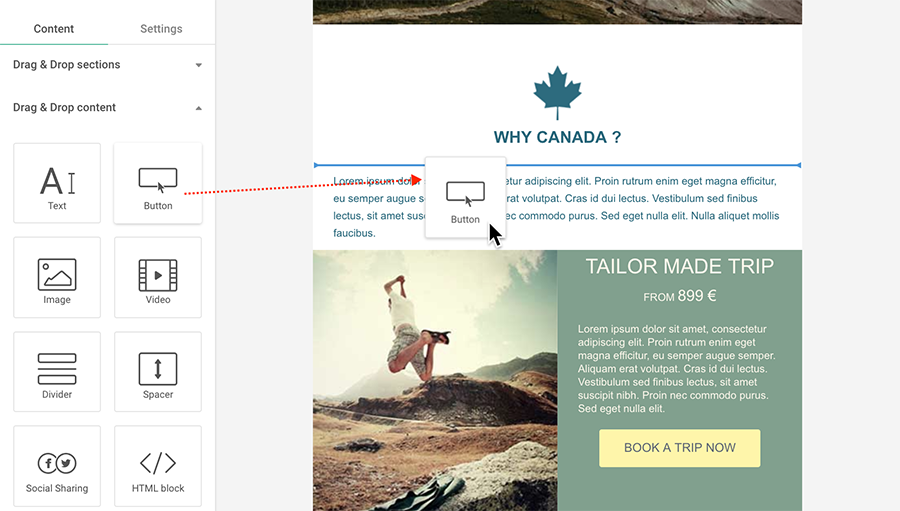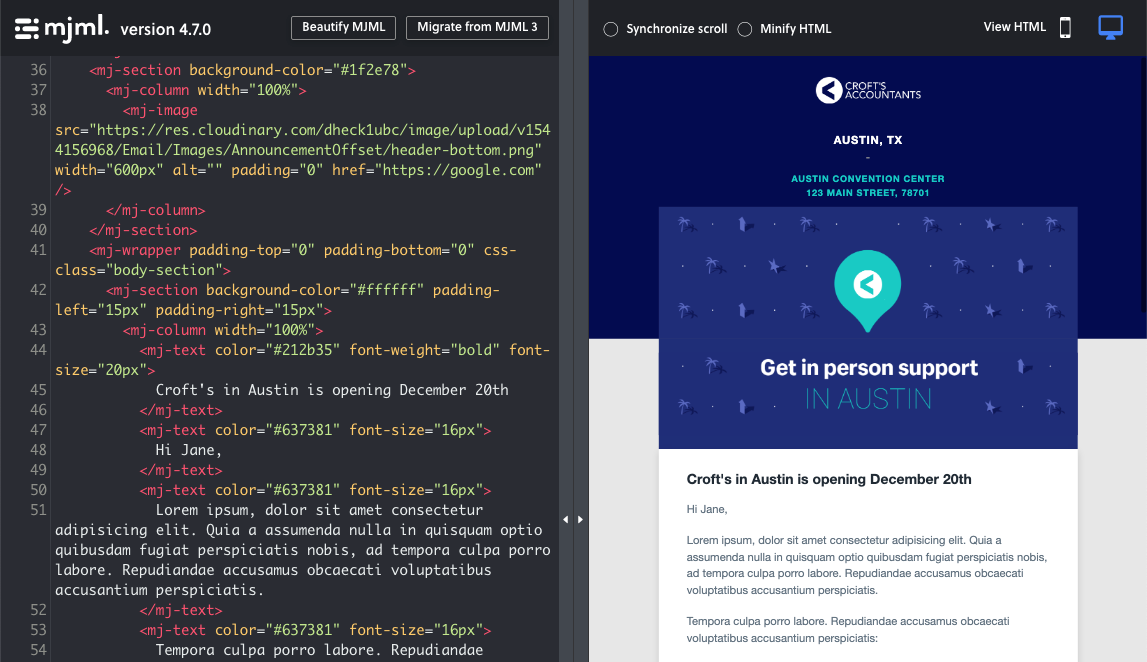

Options for html minifier, see mjml-cli documentation for more info Preserve some tags when inlining css, see mjml-cli documentation for more info Functions must be (xml: string) => string Preprocessors applied to the xml before parsing. Path of file, used for relative paths in mj-includes Option to keep comments in the HTML outputĪvailable values for the validator: 'strict', 'soft', 'skip'
#Mjml code for a line install#
Once your mjml-email folder is on your Desktop, you need to find it in your terminal so you can install MJML inside.

Create a new folder on your Desktop and call it mjml-email. You can pass optional options as an object to the mjml2html function: optionĭefault fonts imported in the HTML rendered by HTML First, you need a folder to install and setup our MJML development environment in. If you want to make one of your own, you can find some simple MJML code snippets and basic advice in our Email Coding 101 tutorial. Email clients the bug is seen on: Gmail App (iOS 10.3.2) Inbox by Gmail. I would expect the images to remain on the same line, and not break into a column, like so. (Watch for part two on advanced MJML techniques coming soon.) Nicole got started by showing us her MJML email boilerplate. I have exported my code minified using the CLI command mjml source.mjml -o output.html -config.minify as well as using this.

Import mjml2html from 'mjml' /* Compile an mjml string */ const htmlOutput = mjml2html ( ` Hello World! `, options ) /* Print the responsive HTML generated and MJML errors if any */ console. Nicole had a lot to say about using MJML, so we’re releasing her episode in two parts.


 0 kommentar(er)
0 kommentar(er)
